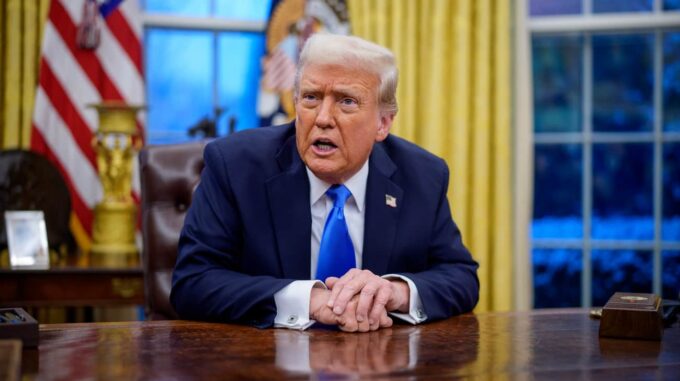Donald Trump has approved a military operation plan against Iran but is currently refraining from signing the final order, carefully monitoring Tehran’s reaction and potential retaliatory actions

According to a reputable American publication, The Wall Street Journal, the situation surrounding Iran’s nuclear program and the possibility of military escalation remains tense and is under close scrutiny in the White House. Sources cited by the publication indicate that on Tuesday evening, the U.S. president personally informed his closest advisors of his approval for preliminary military scenarios against Iran. However, he emphasized that he has not yet issued a direct orders to proceed, focusing instead on diplomatic efforts and hoping that Tehran will abandon its nuclear ambitions on its own. Trump stated that the decision depends on future developments and will be made within the upcoming days. “I can do it, or I may not. Next week will be decisive, possibly less than a week,” the publication quotes him. At the same time, Iranian leader Ayatollah Ali Khamenei made it clear that Iran does not intend to make concessions and will never surrender to external pressures. He warned that any military intervention by the United States would trigger serious and irreversible consequences for the U.S. and the entire region. Sources also report that in response to rising tensions, the U.S. has increased its military presence in the Middle East. New naval ships have been dispatched: the third U.S. Navy destroyer has entered the eastern part of the Mediterranean Sea, and two aircraft carrier groups are now heading toward the Arabian Sea. Pentagon officials emphasize that these measures are purely defensive and aimed at protecting American interests in the region. However, analysts view these developments differently: such military build-up could serve as a form of pressure to force Iran to compromise or halt its nuclear research. Observers and sources from Israeli and American agencies warn that the situation could quickly escalate into active military conflict. According to The New York Times, Iran has already taken steps toward preparing for potential confrontation — intensifying missile and military equipment readiness to strike U.S. bases in the Middle East if the U.S. joins an armed operation against Iran in coalition with Israel. Additionally, the United States has significantly bolstered its military capabilities in Europe and the Middle East. About thirty refueling aircraft have been deployed, capable of supporting fighter jets and strategic bombers over long distances, enabling rapid and extensive strikes on Iranian targets. Meanwhile, the Trump administration keeps open the possibility of using military means to force Iran’s capitulation, for example, through large-scale air campaigns. On Tuesday, the White House chief expressed outright toughness and increased pressure on Tehran, demanding “unconditional surrender.” U.S. Vice President Mike Pence hinted that the Trump administration is still considering additional measures to terminate Iran’s nuclear program. Therefore, regional tensions remain high, and prospects for diplomatic compromise currently look quite doubtful, given the rhetoric and actions of both sides.

